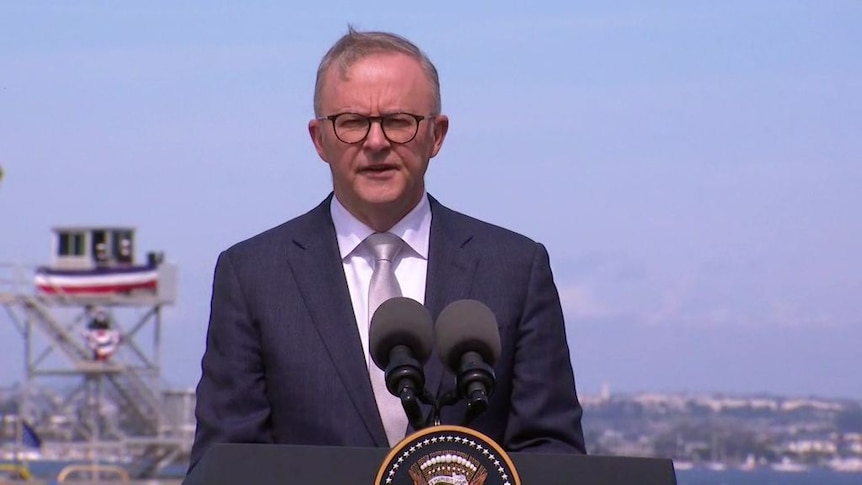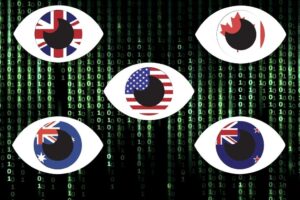The leaders of the United States, Australia and Britain on Monday unveiled details of a plan to provide Australia with nuclear-powered attack submarines, a major step to counter China’s ambitions in the Indo-Pacific.
In a joint statement, U.S. President Joe Biden, Australian Prime Minister Anthony Albanese and British Prime Minister Rishi Sunak endorsed plans for the so-called AUKUS project, first announced in 2021, at the U.S. naval base in San Diego, California, principal home port of the U.S. Pacific Fleet.
Under the deal, the United States intends to sell Australia three U.S. Virginia class nuclear-powered submarines in the early 2030s, with an option to buy two more if needed, the joint statement said.
The statement from the leaders said the multi-stage project would culminate with British and Australian production and operation of a new class of submarine – SSN-AUKUS – a “trilaterally developed” vessel based on Britain’s next-generation design that would be built in Britain and Australia and include “cutting edge” U.S. technologies.
“The first UK submarines built to this design will be delivered in the late 2030s … and the first Australian submarines will follow in the early 2040s,” a British statement said.
The vessels will be built by BAE Systems and Rolls-Royce, it said.
The agreement will also see U.S. and British submarines deployed in Western Australia to help train Australian crews and bolster deterrence, the senior U.S. official said. The joint statement said the United States and Britain would begin these rotational deployments as soon as 2027 and a senior U.S. official said this would increase to four U.S. submarines and one British in a few years.
This first phase of the plan is already underway with Virginia, a nuclear-powered cruise missile attack submarine, currently visiting Perth, Australia, officials said.
SHARING NUCLEAR PROPULSION TECH
AUKUS will be the first time Washington has shared nuclear-propulsion technology since it did so with Britain in the 1950s.
China has condemned AUKUS as an illegal act of nuclear proliferation. In launching the partnership Australia also upset France by abruptly canceling a deal to buy French conventional submarines.
Briefing a small group of reporters on Friday, Sullivan dismissed China’s concerns and pointed Beijing’s own military buildup, including nuclear-powered submarines.
“We have communicated with them about AUKUS and sought more information from them about their intentions,” he said.
Big questions remain about the plan, not least over strict U.S. curbs on the extensive technology sharing needed for the project and about how long it will take to deliver the submarines, even as the perceived threat posed by China mounts.
In a reflection of stretched U.S. production capacity, the senior U.S. official told Reuters it was “very likely” one or two of the Virginia-class submarines sold to Australia would be vessels that had been in U.S. service, something that would require congressional approval.
Australia had agreed to contribute funds to boost U.S. and British submarine production and maintenance capacity, the official said.
He said Washington was looking at “double digit billion” investment in its submarine industrial base on top of $4.6 billion already committed for 2023-29 and that the Australian contribution would be less than 15 per cent of the total.
One senior U.S. official said AUKUS reflected mounting threats in the Indo-Pacific, not just from China towards self-ruled Taiwan and in the contested South China Sea, but also from Russia, which has conducted joint exercises with China, and North Korea as well.
NEW JOBS
Albanese said on Saturday that South Australia and Western Australia would be big beneficiaries of AUKUS. “This is about jobs, including jobs in manufacturing,” he said.
Britain, which left the European Union in 2020, says AUKUS will help boost its economy’s low growth rate.
Sunak said AUKUS was “binding ties to our closest allies and delivering security, new technology and economic advantage at home.”
Australia’s Defense Minister Richard Marles said last week the submarines would ensure peace and stability across the Indo-Pacific, Southeast Asia and the Indian Ocean.
“It is difficult to overstate the step that as a nation we are about to take,” he said.
Political analysts said that given China’s growing power and its threats to reunify with Taiwan by force if necessary, it was also vital to advance the second stage of AUKUS, which involves hypersonics and other weaponry that can be deployed more quickly.
U.S. officials said Monday’s announcements will not cover this second stage.
“We’d like to leave that for another day,” the senior administration official said.
British and Australian officials said this month work was still needed to break down bureaucratic barriers to technology sharing.
Canada left out
Experts are warning that Canada’s omission from AUKUS, involving three of its closest allies, is symptomatic of a larger problem in how the country is perceived by its friends.
STORY CONTINUES BELOW ADVERTISEMENT
The Trudeau government has refused to say whether Canada was invited to join AUKUS and downplayed its importance even as parts of Canada’s military and foreign establishment have called for its inclusion.
Canadian Forces College professor Paul Mitchell believes Canada’s exclusion reflects the perceptions of its closest allies that it remains uncertain about its aims in the Indo-Pacific region.
Defence analyst David Perry of the Canadian Global Affairs Institute says it is also a sign that Canada’s friends are growing tired of its refusal to take national defence and security seriously.





































